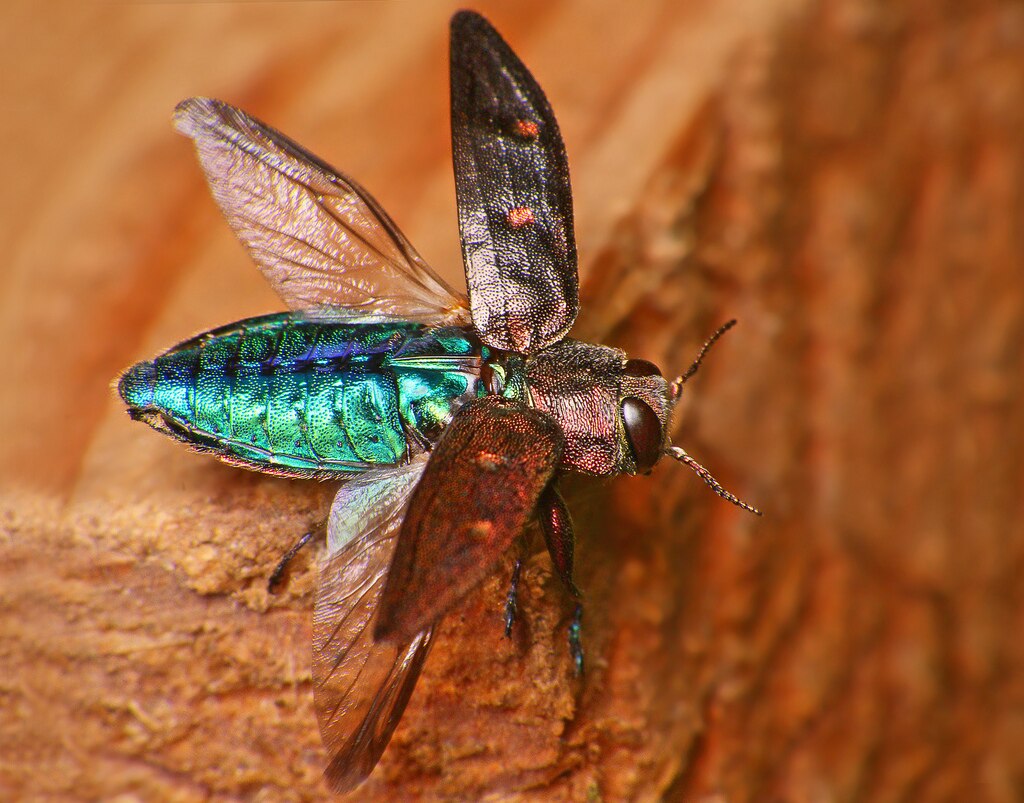Imagine walking across your beautiful hardwood floors one morning, only to notice tiny holes scattered across the surface like a constellation of destruction. You might wonder if someone fired a nail gun randomly, but the truth is far more unsettling. Living beneath your feet, an army of wood-boring beetles has been silently feasting on your flooring, turning solid timber into swiss cheese. These remarkable insects possess jaw strength that would make a hydraulic press jealous, and they’re probably working their way through your home’s wooden structure right now.
The Powerhouse Jaws Behind the Destruction
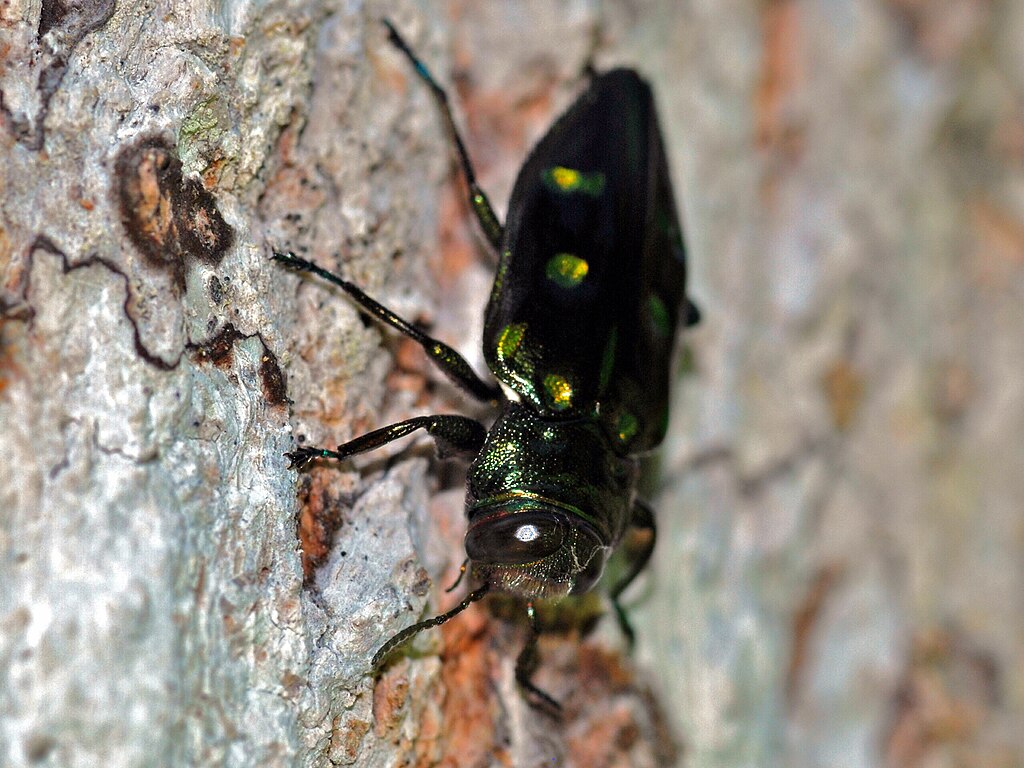
Wood-boring beetles didn’t earn their reputation through luck – they possess some of the most powerful mandibles in the insect kingdom. These tiny creatures can generate bite forces that exceed 100 times their body weight, making them nature’s equivalent of miniature jackhammers. The secret lies in their specialized jaw muscles, which have evolved over millions of years to crush through even the hardest wood fibers. Take the common furniture beetle, for instance. Despite weighing less than a paperclip, it can chew through oak flooring that would challenge a power drill. Their mandibles work like precision tools, creating perfectly round tunnels that follow the wood’s grain patterns with surgical accuracy.
Meet the Most Destructive Floor-Boring Species
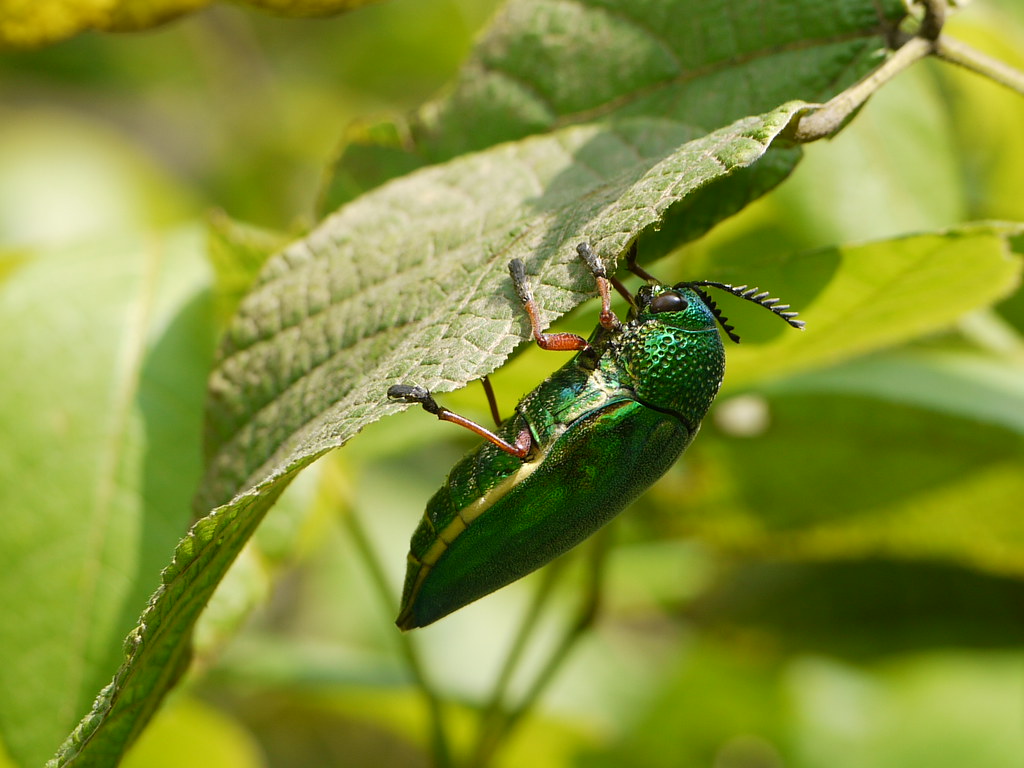
The old house borer stands as the heavyweight champion of hardwood destruction. These beetles can grow up to an inch long, and their larvae spend years tunneling through structural timber, creating galleries that weaken entire floor systems. They particularly love softwoods like pine and fir, but they won’t hesitate to tackle hardwood floors when the opportunity arises. Powderpost beetles represent another major threat, earning their name from their ability to reduce solid wood to fine powder. These smaller insects prefer hardwoods with large pores, making oak and ash flooring their favorite targets. Their larvae create intricate tunnel networks that can span several feet beneath a single floorboard.
The Silent Invasion: How Beetles Enter Your Home

Most wood-boring beetles arrive as uninvited guests, often hitching rides on furniture, lumber, or firewood. Adult females seek out suitable wood surfaces to lay their eggs, and once they find your beautiful hardwood floors, they consider it a five-star nursery. The eggs are typically deposited in cracks, crevices, or existing holes in the wood surface. Some species can detect the chemical signatures of different wood types from considerable distances. They’re particularly drawn to wood with higher moisture content, which explains why basements and ground-level floors often suffer the worst damage. Once established, a single beetle can lead to an infestation that lasts for years.
The Life Cycle of Floor Destruction

Understanding the beetle’s life cycle reveals why floor damage can seem to appear overnight. After eggs hatch, the larvae begin their destructive feast, spending anywhere from six months to several years boring through your flooring. During this time, they’re completely hidden from view, working tirelessly to consume the wood from within. The larvae are the real culprits behind floor damage, as they do 90% of the actual boring and feeding. They grow larger and more voracious as they mature, creating increasingly wider tunnels. When they finally emerge as adults, they leave behind the characteristic exit holes that homeowners notice first – but by then, the damage is often extensive.
Warning Signs Your Floors Are Under Attack

The most obvious sign of beetle activity is the presence of small, round holes in your flooring, typically ranging from 1/8 to 1/2 inch in diameter. These exit holes indicate that adult beetles have completed their development and emerged from the wood. Fresh holes often have clean, sharp edges, while older infestations show weathered, rounded openings. Fine sawdust or powder accumulating around these holes provides another clear indicator of active boring. This frass, as entomologists call it, consists of wood particles and beetle waste products. You might also notice a subtle weakening of floorboards, with some sections feeling spongy or hollow when stepped on.
The Sound of Destruction: Listening for Beetle Activity

Many homeowners report hearing faint scratching or ticking sounds coming from their floors, especially during quiet evening hours. These sounds represent the beetles’ mandibles working against wood fibers, creating an eerie soundtrack to their destructive activities. The noise is often most noticeable in bedrooms or living rooms where background sounds are minimal. Some species produce rhythmic tapping sounds as part of their mating behavior, with males drumming against tunnel walls to attract females. This behavior, known as stridulation, can create patterns of sound that seem almost musical. However, hearing these sounds means the infestation is likely well-established and breeding actively.
Environmental Factors That Attract These Pests

Wood-boring beetles thrive in specific environmental conditions, and understanding these factors can help explain why some homes suffer severe infestations while others remain untouched. High humidity levels create ideal conditions for beetle development, as moisture softens wood fibers and makes them easier to digest. Basements and crawl spaces with poor ventilation often become beetle breeding grounds. Temperature also plays a crucial role in beetle activity. Most species prefer temperatures between 70-80°F, which unfortunately matches the comfort range of most homes. Additionally, certain wood treatments and finishes can either attract or repel beetles, with some stains and sealers actually making floors more appealing to these pests.
Species-Specific Damage Patterns
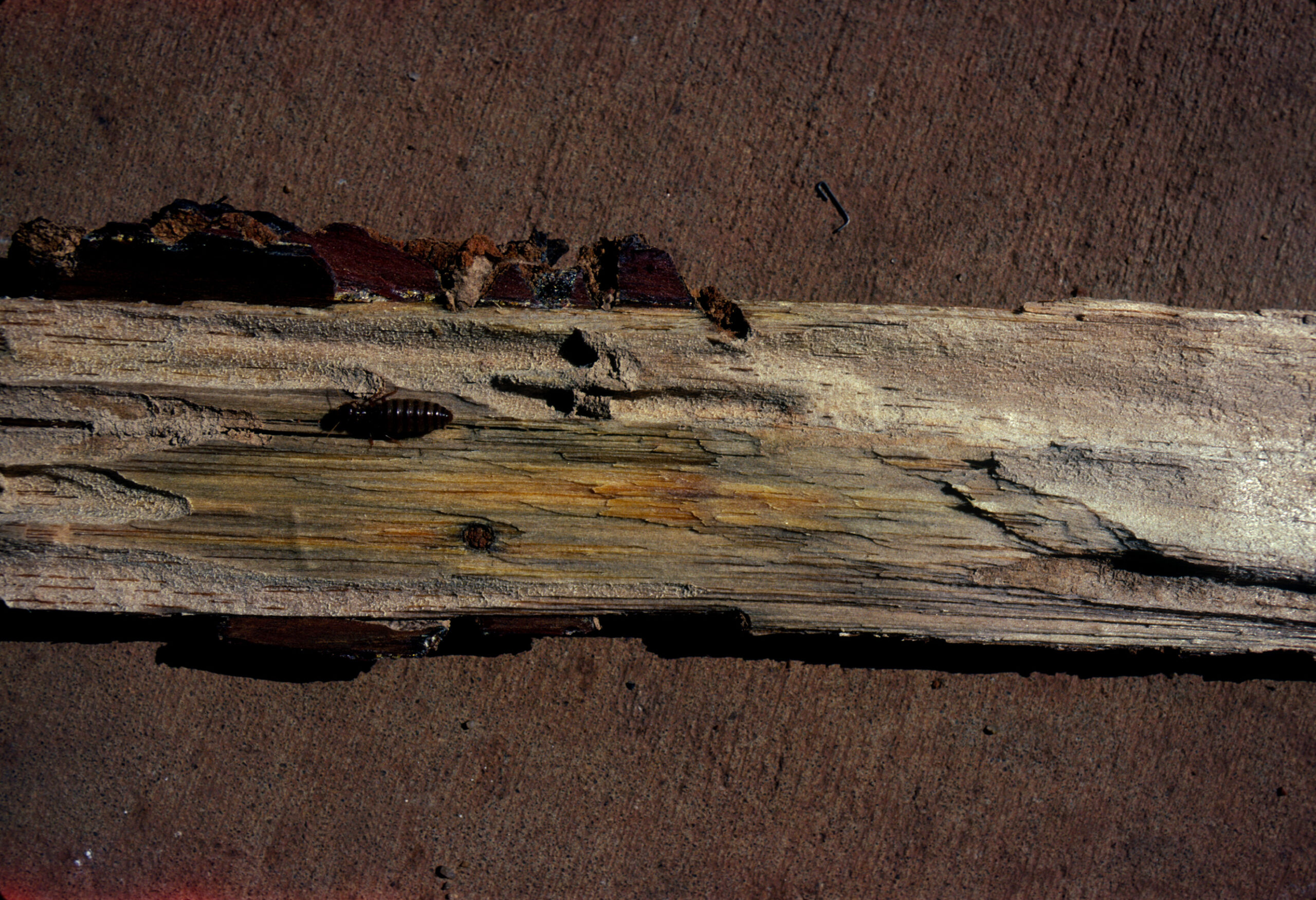
Different beetle species create distinct damage patterns that can help identify the culprit. Lyctid powderpost beetles create holes that are perfectly round and about 1/8 inch in diameter, often accompanied by fine, flour-like powder. Their tunnels run primarily along the wood grain, creating long, narrow galleries. Old house borers, in contrast, create larger oval holes up to 1/2 inch across, with coarser sawdust that includes visible wood chips. Their larvae create broader tunnels that can span multiple grain lines, often following the wood’s natural growth patterns. Anobiid beetles fall somewhere between these extremes, creating moderately-sized holes with medium-textured frass.
The Hidden Structural Damage
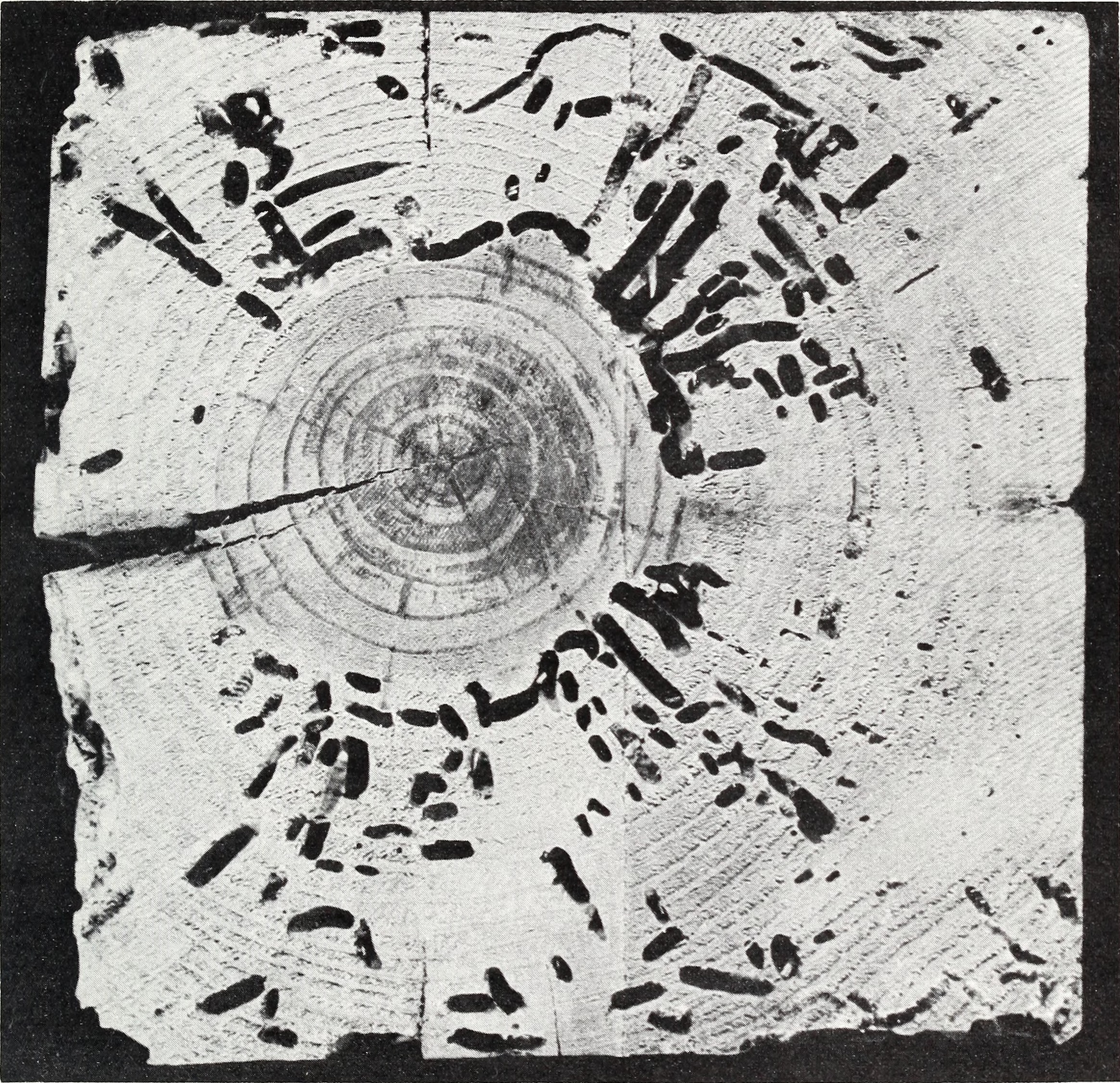
While surface holes are the most visible signs of beetle damage, the real concern lies in the structural integrity of affected flooring. Extensive tunnel networks can reduce a solid piece of wood to a hollow shell, maintaining its external appearance while compromising its load-bearing capacity. This hidden damage can lead to sudden floor failures, particularly in high-traffic areas. The tunneling patterns often follow the wood’s natural grain structure, which can concentrate damage along stress lines. In extreme cases, entire sections of flooring may need replacement, as the interconnected tunnel systems create weak points that spread throughout the board. Even minor infestations can compromise the floor’s ability to distribute weight evenly.
Geographic Distribution and Climate Preferences

Wood-boring beetles show distinct geographic preferences, with different species dominating in various climate zones. The southeastern United States sees heavy activity from old house borers, which thrive in the region’s warm, humid conditions. Meanwhile, powderpost beetles prefer the moderate climates of the Pacific Northwest and Great Lakes regions. Climate change is expanding the range of many beetle species, allowing them to survive in previously inhospitable areas. Rising temperatures and changing precipitation patterns create new opportunities for these pests to establish themselves in regions where they were once rare. This expansion means homeowners in previously safe areas may now face beetle threats for the first time.
Prevention Strategies That Actually Work
Effective beetle prevention starts with moisture control, as dry wood below 12% moisture content becomes virtually inedible for most species. Installing proper ventilation systems and using dehumidifiers can create conditions that discourage beetle activity. Regular inspection of wooden surfaces, particularly in basements and crawl spaces, allows for early detection before infestations become established. Sealing cracks and crevices in flooring eliminates potential egg-laying sites, while proper wood treatment with borates creates a chemical barrier that repels beetles. However, these treatments must be applied before infestation occurs, as they cannot eliminate existing beetle populations. Quarantining new wood products and furniture for several weeks can prevent introducing beetles from external sources.
Professional Treatment Options
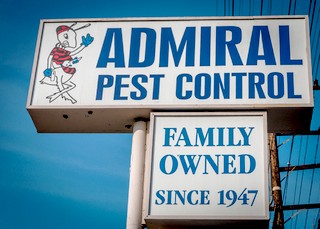
When prevention fails, professional pest control services offer several treatment approaches depending on the severity and species involved. Fumigation provides the most comprehensive solution for widespread infestations, using gases that penetrate deep into wood structures to eliminate all life stages. However, this process requires temporary evacuation and extensive preparation. Heat treatment represents an eco-friendly alternative, raising the temperature of affected areas to levels that kill beetles without using chemicals. This method works particularly well for localized infestations but requires specialized equipment and expertise. Targeted injection treatments can address specific problem areas, delivering pesticides directly into beetle galleries and tunnels.
The Role of Wood Species in Beetle Attraction

Not all hardwood species are equally attractive to boring beetles, and understanding these preferences can guide flooring choices. Oak and ash, with their large pores and high starch content, top the menu for many beetle species. These woods provide both easy access for egg-laying and nutritious conditions for larval development. Conversely, some hardwoods like teak and cedar contain natural compounds that repel beetles, making them poor choices for these pests. Cherry and maple fall somewhere in the middle, offering moderate resistance due to their tighter grain structure. However, even naturally resistant woods can become vulnerable when processed or treated with certain chemicals that break down their natural defenses.
Long-Term Impact on Home Value
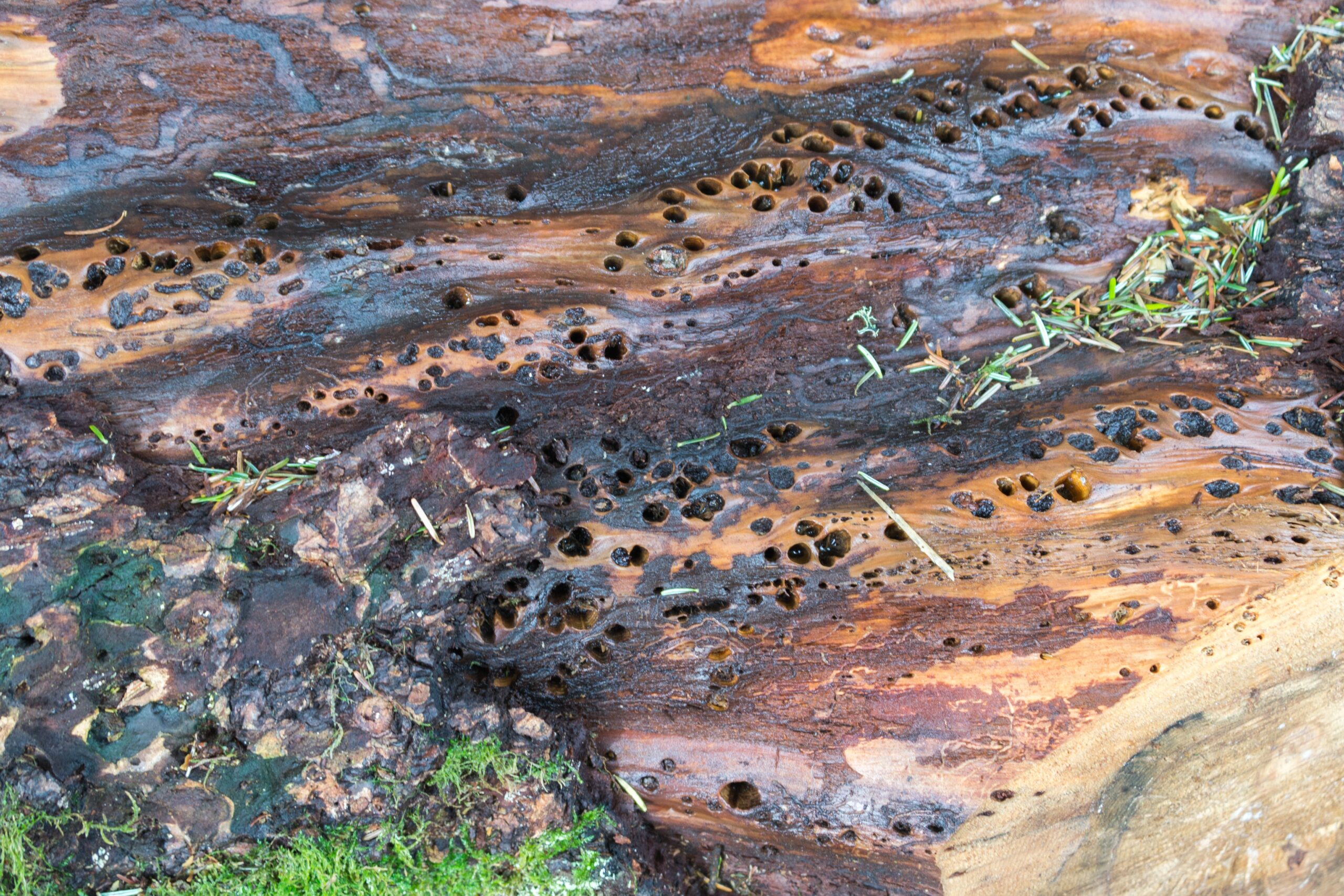
Beetle damage can significantly impact property values, particularly when structural integrity is compromised. Real estate inspectors specifically look for signs of wood-boring insect activity, and even minor infestations can trigger expensive remediation requirements. The cost of professional treatment and floor replacement often exceeds thousands of dollars, making prevention far more economical than cure. Insurance coverage for beetle damage varies widely, with many policies excluding damage from insects unless it occurs suddenly and accidentally. This exclusion leaves homeowners responsible for both treatment costs and structural repairs. Documentation of prevention efforts and regular professional inspections can sometimes help with insurance claims, but coverage remains uncertain.
Conclusion

These tiny destroyers represent one of nature’s most persistent and effective wood-processing machines. Their ability to transform solid hardwood floors into networks of tunnels showcases millions of years of evolutionary refinement. While their destructive power can devastate homes, understanding their behavior and implementing proper prevention strategies can keep these remarkable insects from turning your floors into their personal buffet. The key lies in recognizing that these beetles are not just pests – they’re highly specialized organisms that have perfected the art of wood consumption. What fascinates you more: their incredible jaw strength or their ability to remain hidden for years?

